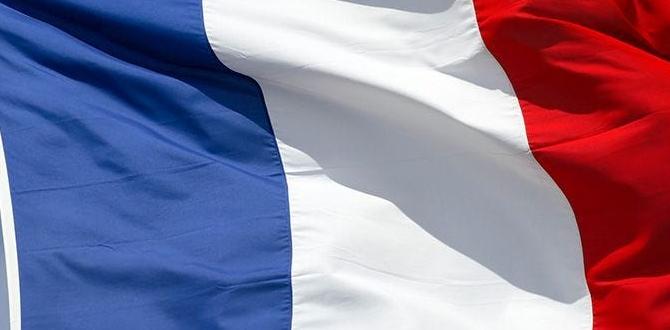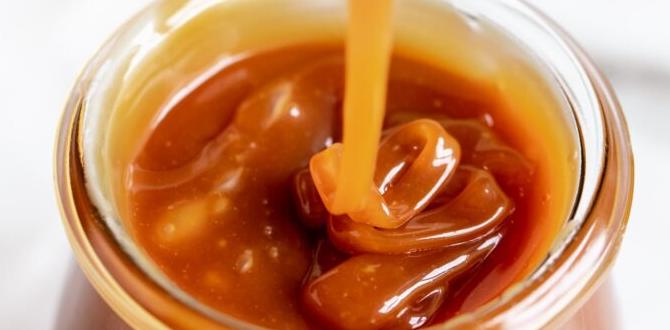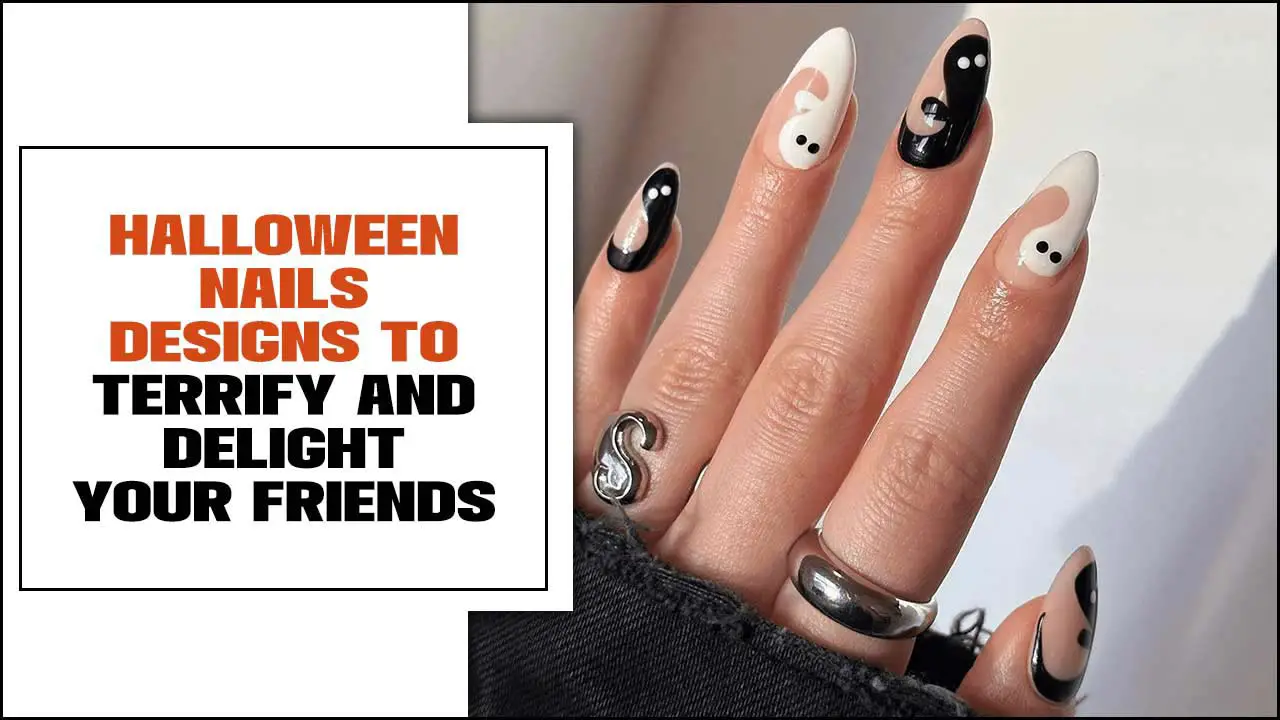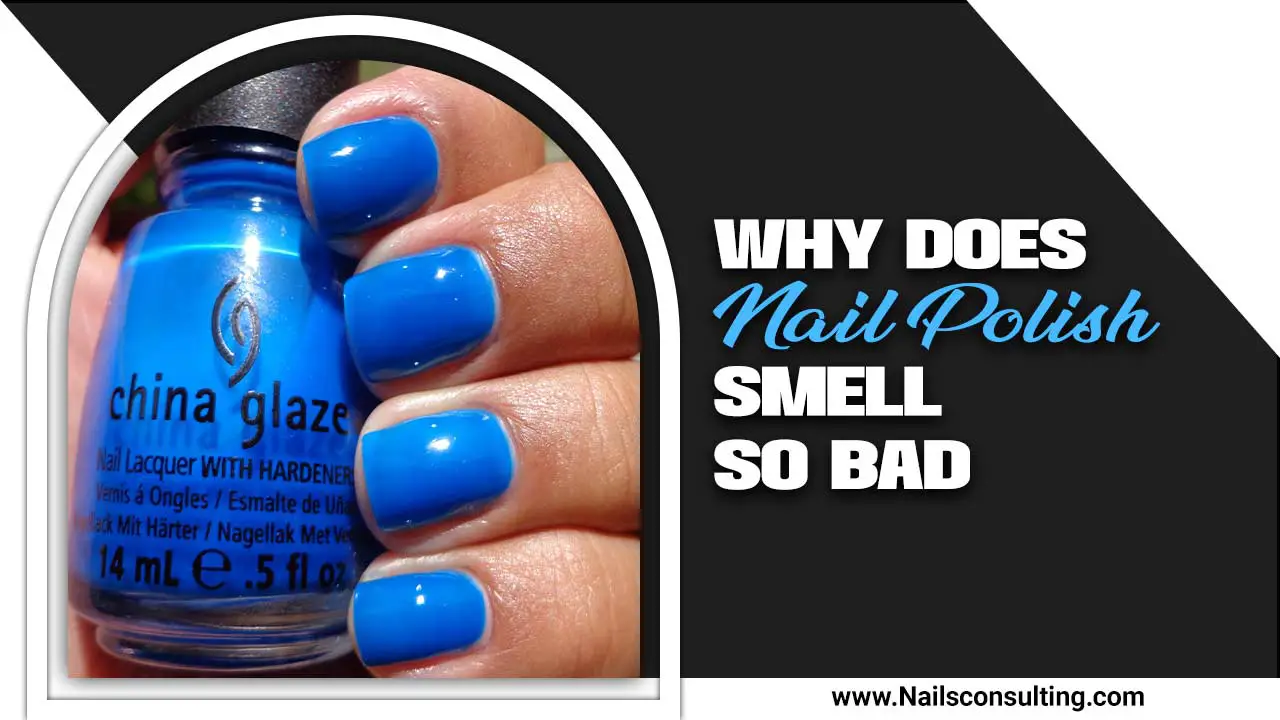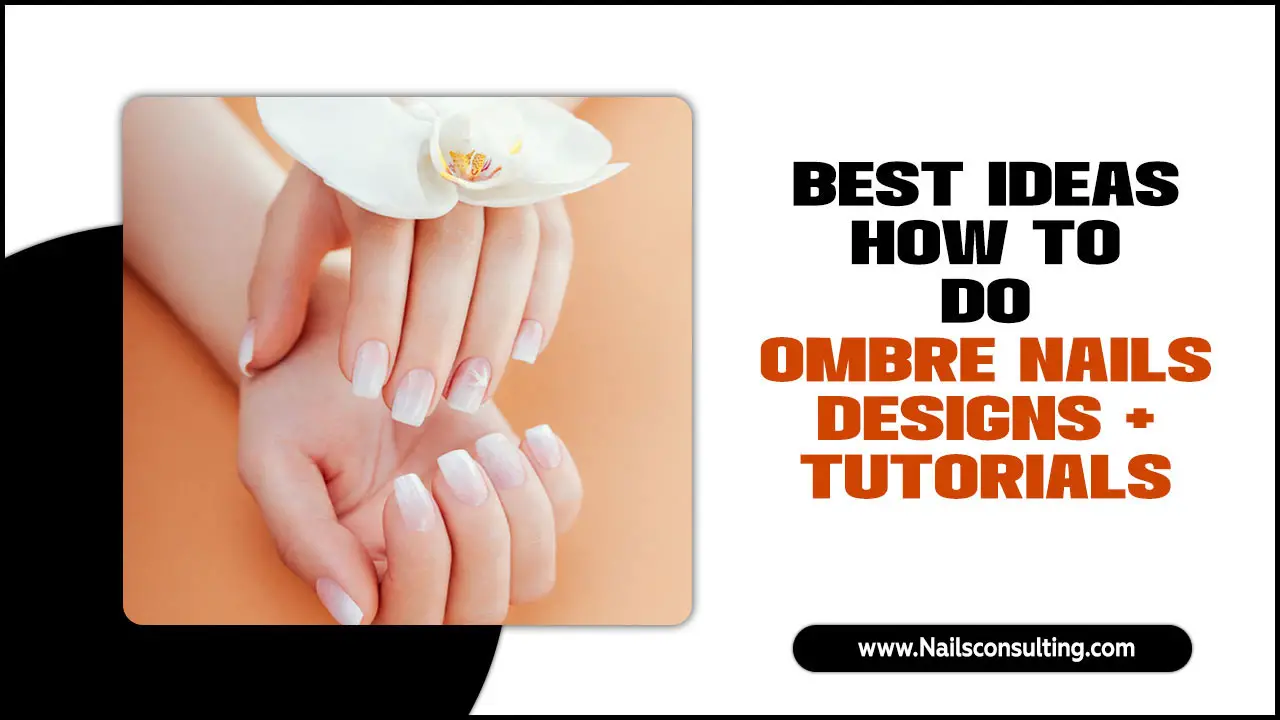Rainbow nail designs are a vibrant and fun way to express yourself! This guide breaks down everything you need to know, from basic color concepts to achieving stunning rainbow looks at home, making it easy for beginners to create beautiful, bold manicures.
Who doesn’t love a splash of color? Rainbow nail designs are incredibly popular for a reason – they’re cheerful, eye-catching, and let your personality shine. But if you’re new to nail art, the idea of creating a perfect rainbow on your fingertips might feel a little daunting. Don’t worry! We’re here to simplify everything. Think of this as your friendly guide to unlocking the magic of rainbow nails.
We’ll cover all the essentials, from understanding the rainbow’s order to the simple tools and techniques that will have you painting like a pro. Get ready to add some serious joy to your nail game – you’ve got this!
What Are Rainbow Nail Designs?
Simply put, rainbow nail designs are manicures that feature the colors of the rainbow. This typically includes red, orange, yellow, green, blue, and violet (though sometimes indigo is skipped or combined with blue or violet). These colors can be arranged in various ways, from a classic arc to a vibrant gradient or even abstract splashes.
The Philosophy Behind the Colors
The rainbow itself is a beautiful natural phenomenon, a spectrum of light that appears after rain when sunlight refracts through water droplets. In art and design, the rainbow symbolizes hope, joy, diversity, and happiness. This translates perfectly into nail art, offering a cheerful and expressive canvas.
The order of colors in a rainbow is pretty consistent, thanks to physics! It’s often remembered with mnemonics like ROY G. BIV (Red, Orange, Yellow, Green, Blue, Indigo, Violet). While you don’t always need to stick to this exact order to have a “rainbow” look, understanding it helps when you want to recreate that classic, harmonious effect.
Essential Tools for Rainbow Nail Designs
You don’t need a professional salon setup to create stunning rainbow nails. With a few basic tools, you can achieve amazing results right at home. Here’s what you’ll want to have on hand:
- Nail Polish: Obviously! You’ll need polishes in the colors of your chosen rainbow.
- Base Coat: Crucial for protecting your natural nails and helping polish adhere better.
- Top Coat: Seals your design, adds shine, and protects against chipping.
- Dotting Tools: These come in various sizes and are perfect for creating dots, lines, and small designs.
- Thin Nail Art Brushes: For delicate lines, swirls, and filling in small areas.
- Sponge: A regular makeup sponge or a specialized nail art sponge is fantastic for creating gradient effects.
- Nail Polish Remover: For cleaning up mistakes and keeping your tools clean.
- Cotton Swabs/Pads: Also for cleanup!
- Optional: Cuticle Oil: To keep your skin hydrated and looking neat.
Having these items will make the process much smoother and more enjoyable. Don’t be afraid to start simple; even basic dotting tools can open up a world of design possibilities.
Understanding the Rainbow Color Order and Variations
The classic rainbow follows a specific color sequence. Knowing this helps you create that recognizable, harmonious look.
The ROY G. BIV Spectrum
This is the order that light splits into:
- Red
- Orange
- Yellow
- Green
- Blue
- Indigo (often a deep blue-purple)
- Violet (purple)
Simplified Rainbows
For many nail designs, especially for beginners, a simplified rainbow is perfectly lovely and much easier to manage. Common simplified versions include:
- Red, Orange, Yellow, Green, Blue, Purple (omitting indigo)
- Red, Yellow, Green, Blue (a very basic, bold spectrum)
- Pink, Orange, Yellow, Green, Blue, Purple (adding pink for a softer feel)
Beyond the Linear Rainbow
Rainbows don’t have to be a straight line! You can arrange the colors in:
- Arcs: Mimicking the shape of a natural rainbow.
- Circles: Concentric circles or a circular pattern.
- Abstract Splashes: Free-form application for a painted-on look.
- Vertical Stripes: Colors running from cuticle to tip.
The most important thing is to have fun with the colors and arrangements that appeal to you!
Beginner-Friendly Rainbow Nail Design Techniques
Let’s get to the fun part – making beautiful rainbow nails! Here are some easy techniques perfect for those just starting out.
1. The Rainbow French Tip
This is a stylish twist on a classic French manicure.
What You’ll Need:
- Base coat
- Nail polish in rainbow colors (e.g., red, orange, yellow, green, blue, purple)
- Thin nail art brush or a French tip guide sticker
- Top coat
Steps:
- Apply a base coat to clean, dry nails. Let it dry completely.
- Paint your nails with a sheer nude, pink, or white polish for the nail bed. Let it dry.
- Now, for the tips! You have a few options:
- Freehand with a thin brush: This takes practice! Start with red on the tip of one nail, then orange on the next, and so on across all your nails or on one accent nail.
- Using a French tip guide: Place the sticker just above where you want the colored tip to start. Paint over the exposed tip with your first rainbow color. Carefully peel off the sticker while the polish is still wet to get a clean line. Repeat with different colors on different nails or on different sections of a single nail tip (this is advanced!).
- Ombre Tips: For a very chic look, you can blend one color into the next at the very tip.
- Carefully clean up any polish on your skin with a cotton swab dipped in nail polish remover.
- Once all the colored tips are dry, apply a generous layer of top coat to seal everything in and add shine.
2. Rainbow Dot Manicure
Dots are easy to create and look super cute in rainbow patterns!
What You’ll Need:
- Base coat
- Nail polish in rainbow colors
- Dotting tool (or the tip of a bobby pin, a toothpick, or the end of a pen)
- Top coat
Steps:
- Apply base coat and let it dry.
- Paint your nails with a white or light-colored polish. This makes the rainbow dots pop! Let it dry completely.
- Choose your rainbow color order.
- Dip your dotting tool into the first color (e.g., red).
- Place a dot on your nail. For a simple rainbow, place a line of vertically spaced dots across the nail.
- Clean your dotting tool (or use a different one) and repeat with the next color (orange), placing dots next to or slightly overlapping the red dots.
- Continue with yellow, green, blue, and purple, building your rainbow effect. You can make them all in a line, a slight curve, or even a small cluster.
- Repeat on other nails, or create different rainbow dot patterns on each finger.
- Clean up any stray marks.
- Apply a layer of top coat to protect your beautiful dots.
3. Rainbow Gradient (Ombre) Nails
This technique creates a beautiful, seamless blend of colors.
What You’ll Need:
- Base coat
- Nail polish in rainbow colors
- Makeup sponge or specialized nail art sponge
- A small dish or piece of foil for polish
- Cleanup tools (cotton swabs, polish remover)
- Top coat
Pro Tip: A makeup sponge can be a bit messy on the skin, so consider applying Vaseline or liquid latex around your cuticles before you start. This creates a barrier that you can easily peel off later!
Steps:
- Prep your nails with base coat and let them dry.
- Apply a white or very light base color. This allows the gradient colors to look brighter and more true to their shade. Let it dry completely.
- On your sponge, create stripes of your rainbow colors side-by-side. For example, if you’re doing a horizontal gradient, put red, then orange, then yellow, etc., in stripes across the sponge.
- Quickly and gently dab the sponge onto your nail. You might need to dab a few times to transfer the color.
- The sponge will absorb some polish, so reposition and dab again to build up the color intensity and blend the shades.
- For a seamless blend, you can use a separate, clean section of sponge (or a different sponge) to gently dab over the edges where colors meet.
- If you’re doing a vertical gradient, apply the colors in stripes from top to bottom on the sponge.
- Clean up the excess polish around your nails immediately with a cotton swab dipped in remover.
- Let the gradient dry for a minute, then apply your top coat to smooth out the finish and seal in the design.
4. Rainbow Stamping
For a clean and intricate look, stamping can be a game-changer.
What You’ll Need:
- Base coat
- White or light-colored nail polish (for the base)
- Nail stamping plates with rainbow or line designs
- Nail stamping polish in rainbow colors
- Stamper and scraper
- Top coat
Steps:
- Apply base coat and your desired base color (usually white or a light neutral). Let it dry thoroughly.
- Apply a quick-dry top coat over the base color. Let it become slightly tacky, but not fully dry. This helps the stamped image adhere better. This is sometimes called a “sticky base.”
- Apply a line of your first rainbow stamping polish color over the design on your stamping plate.
- Using the scraper card at a 45-degree angle, quickly scrape off the excess polish.
- Immediately pick up the design with your stamper.
- Gently roll the stamper over the tacky top coat on your nail.
- Repeat this process for each color in your rainbow design, either on different nails or building up a pattern on one nail. You might need to use different plates or section off designs on larger plates.
- Clean up any messy edges.
- Once the stamped design is dry, apply a top coat to seal it.
Stamping requires a bit of practice to master the quick movements, but it’s incredibly rewarding for creating detailed patterns.
Rainbow Nail Design Inspiration and Variations
Once you’ve got the basic techniques down, the sky’s the limit for creative rainbow designs!
Seasonal Rainbows
- Summer: Bright, neon rainbow colors.
- Autumn: Warm rainbow tones like deep reds, oranges, yellows, and browns.
- Winter: Icy pastels or metallic rainbow shades.
- Spring: Soft pastels and gentle color transitions.
Themed Rainbows
- Pride Rainbow: Classic six-color rainbow or variations incorporating more colors.
- Unicorn Rainbow: Iridescent and holographic finishes with soft pastel rainbow blends.
- Geometric Rainbow: Using tape to create sharp lines and rainbow-filled geometric shapes.
- Galaxy / Cosmic Rainbow: Deep blues and purples with scattered rainbow glitter or specks of color.
Advanced Techniques for the Ambitious
If you’re feeling adventurous after mastering the basics:
- Freehand Rainbow Flames: Painting fiery rainbow flames.
- Tiny Rainbow Details: Using the finest brushes to create intricate repeating rainbow patterns.
- 3D Rainbow Elements: Incorporating acrylic or gel to create raised rainbow designs.
Where to Find High-Quality Nail Art Supplies
For the best results, investing in good quality supplies makes a difference. Reputable online retailers and specialized beauty stores often carry a wide selection of polishes, tools, and stamping plates. Reputable brands often provide detailed information about their product ingredients and usage, ensuring a safer and more effective experience.
For example, understanding the difference between standard nail polish and gel polish is important. Gel polish, while offering incredible durability, requires a UV/LED lamp for curing. You can learn more about safe nail product usage from resources like the U.S. Food & Drug Administration (FDA), which provides consumer information on cosmetic safety.
Maintaining Your Rainbow Nails
Keeping your vibrant designs looking fresh is key to enjoying them longer!
- Reapply Top Coat: A fresh layer of top coat every 2-3 days can significantly prevent chipping and maintain shine.
- Wear Gloves: When washing dishes, cleaning, or doing any task that involves prolonged exposure to water or harsh chemicals, wear rubber gloves.
- Avoid Harsh Chemicals: Even with a good top coat, prolonged contact with things like acetone, strong soaps, or cleaning agents can degrade the polish.
- Moisturize: Use cuticle oil regularly to keep your nails and the skin around them healthy. Dry cuticles can lead to hangnails and make your manicure look less tidy.
- Be Gentle: Avoid using your nails as tools (e.g., opening cans, scraping).
By taking these simple precautions, your beautiful rainbow nail art will stay vibrant and chip-free for as long as possible.
Frequently Asked Questions About Rainbow Nail Designs
Q1: Do I need to use all seven colors of the rainbow for a rainbow nail design?
No! You can use any combination of colors that you feel represents a rainbow. Many popular designs use five or six colors. Sometimes, just red, yellow, and blue can give a strong rainbow effect.
Q2: How do I get clean lines between my rainbow colors?
For clean lines, especially with gradients or stripes, using nail art tape or guide stickers is very helpful. Alternatively, freehanding with a very fine brush and taking your time can also yield great results. Cleanup with a small brush and nail polish remover is your best friend!
Q3: My rainbow gradient looks streaky. What can I do?
Streaks often happen when the polish on the sponge isn’t blended enough, or when you don’t dab the sponge onto the nail enough times. Try applying more polish to the sponge (more layers of stripes) and dabbing more firmly or multiple times on the nail. A quick-dry top coat can also help smooth out the transition once the initial colors are dry.
Q4: Can I do rainbow nail designs on short nails?
Absolutely! Rainbow designs can look fantastic on short nails. For dotting or stripe patterns, you might need to use smaller dots or thinner stripes. Gradients also work well, creating a lovely color blend even on a petite nail shape.
Q5: What’s the easiest way to do a rainbow nail design for a total beginner?
A rainbow dot manicure is generally the easiest for beginners. Use a dotting tool to place dots of different colors in a line or arc on a white base. It’s forgiving and looks super cute!
Q6: How long do rainbow nail designs typically last?
With a good base and top coat, most nail polish manicures, including rainbow designs, can last anywhere from 5 to 10 days. This depends heavily on your nail care routine, the quality of the polish, and how much you use your hands.
Conclusion
Rainbow nail designs are a fantastic way to brighten your day and showcase your creativity. Whether you opt for a simple dot pattern, a seamless gradient, or a chic French tip, the key is to experiment and have fun with the vibrant spectrum of colors. You’ve learned about the essential tools, the basic color order, and some easy techniques that even a beginner can master. Don’t be afraid to try these methods, practice makes perfect, and the results will be a dazzling display of color on your fingertips!
So go ahead, gather your polishes, pick a technique, and paint your way to a more colorful, confident you. Happy nailing!



